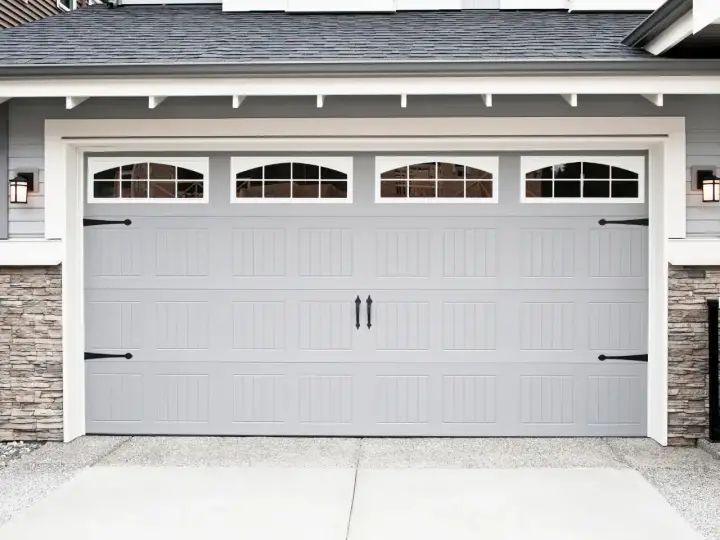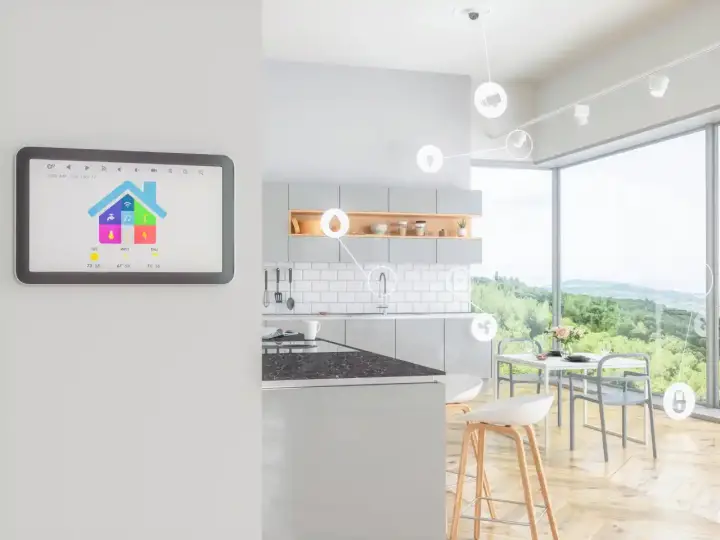Top 4 Best Ways to Automate Your Garage Door With Zigbee
Updated on 14th Mar 2021 16:52 in General, Smart
Tilt sensors are generally sought after due to their ability to detect a garage door's current state. Those using Smartthings or Alexa hub will want to get a sensor natively compatible with these systems, which requires that they use the Zigbee wireless protocol. If you've ever searched for these, you'll know that they seem to be quite rare, making them difficult to find. There are some other ways to detect that the garage is open or closed, though, and that's what we will see in a moment.

Disclaimer: This post contains affiliate links. As an Amazon Associate, I earn from qualifying purchases.
Table of Contents
Tilt sensors
When most people think of a sensor to detect a garage door's position, the tilt sensor is often the first thought. There is a good reason for this in that the installation of a tilt sensor is by far the easiest option compared to other sensors. While they may be easy to get going, they suffer from some pretty annoying reliability problems. The mechanism for detecting a "tilt" is often extremely cheap and is meant more to prevent tampering by detecting when something is being moved. In any case, the fact that they are so difficult to find could certainly indicate that they have problems.
The bigger issue with these sensors is that they don't provide much information besides whether they are currently tilted or resting. Most garage doors don't move directly from a vertical position to being horizontal. This leaves a portion of the door's movement that will be at various angles, which can cause fluctuations in the sensor reading depending on which panel it happens to be mounted to. This can be a real pain to deal with in automation, where things get complicated if sensors output unstable values. This makes a case for a tilt sensor being less ideal than at first thought.
Nyce NCZ-3014-HA Zigbee Garage Door (Tilt)
This sensor has a listed battery life of up to 5 years! It's also compatible with the most common Zigbee hubs. Despite that, it seems that many modern hubs are not officially supported, leaving the question of if it will work with your hub up to the consumer. They make sure to point out that this device is not compatible with Control4, so you'll want to read on if you can't use this. As of the time of writing, it seems that this particular device is out of stock. As there aren't too many options, this is probably still your best bet for getting a Zigbee tilt sensor.
Check out the Nyce Tilt Sensor on Amazon!
Contact sensor
You might be wondering why a sensor made for doors will help determine the garage door state, which has a very different mode of operation. In reality, these sensors are perfect for getting reliable state information about whether the door is open or closed. While the other sensors try to guess that something is happening using orientation or motion changes, this sensor directly verifies that the magnet is present near the sensor. If the magnet and sensor are separated, the sensor will determine that the door is open while the magnet's presence indicates that the door is closed.
Placing the sensor and magnet near the bottom of the door will allow for the best detection, as the door will have to be completely closed to register as such. Other sensors can detect changes in the door's position, but not how far the door moved, which is easily detected by this solution. With a tilt sensor, the door could move to trigger the sensor but then stop before reaching the fully closed state. It would still register this as the door being closed because it does not have the required information to know for certain that it wasn't.
As such, most garage door sensors make some sort of assumption about the door's current state using the limited information available. This usually leads to sensors having only two states, open or closed, while real doors have many more due to their ability to stop at any point on the rail. A situation you will probably want to detect is that the garage door is half-open, which is the perfect use for a contact sensor. They will only say the door is closed when the magnet is physically located near the sensor, so short of someone moving the magnet, the door must have closed.
Sengled Smart Window & Door Sensor
This sensor is perfect for use with the garage door as it is small and compact, while many others are quite bulky. It uses Zigbee and is compatible with Smatthings, though the manufacturer specifies their hub is required. Using it will involve mounting the magnet to the garage door and the sensor to the wall nearby (or another surface). The most important aspect is to ensure the sensor is placed at the bottom of the door so that it only detects the magnet when the door is fully closed. It uses a small coin cell battery to keep the device small but also has a limited lifespan as a result. Don't forget to monitor the battery level!
Check out the Sengled Smart Window & Door Sensor on Amazon!
Smart Garage Door Opener
Most of the techniques listed here primarily focus on detecting that the door has either opened or closed, but what if we could get the information directly from the machine responsible for opening the door? As it turns out, you can control the garage door opener directly with a smart device! With a smart device controlling the door's opening and closing actions, the device will know exactly when the door has changed state as it was the one to send the command. This method isn't without problems, though, as it is still possible for the door to end up somewhere different than where the opener wanted it to go.
A common example of this is if an object is detected under the door. The system will stop closing the door and will open it back up when a potentially dangerous situation is identified. It is very important not to modify the safety features of garage door openers! Find another way to do what you want if you are faced with modifying a safety system.
Despite that potential downside, the smart device will usually be a relay that bridges the connection between two contacts on your opener, making installation trivial. You will want to check your garage opener model before getting one of these, though, as they each have different ways to trigger the opening action. Many systems will have contacts on the back that activate the opener when connected together. Installing a smart opener into one of these is as easy as connecting the two wires from the device into these contacts. Other models lack such an input, requiring the use of a remote or wall switch instead.
Meross Smart WiFi Garage Door Opener
This device is small but mighty as it offers tons of features packed into a tiny housing. The setup consists of wiring it directly into the opener to connect the activation contacts together. If you have an opener that doesn't offer this function, an alternative is to wire the module into a wireless remote or a wall switch instead. As long as the module can act as a switch by connecting the two wires, it will open the garage door. The kit also comes with sensors to detect the door's movement to identify if the door was opened manually. As such, this device is really the best of all options here as it presents the most comprehensive solution. Unfortunately, it's WiFi only and does not support Zigbee. There does not seem to be many devices of this kind to support Zigbee for some reason, so this might be the best option.
Check out the Meross Smart WiFi Garage Door Opener on Amazon!
Vibration sensor
This solution is last as it is quite possibly the worst option for identifying whether your garage door is open or closed. While most garage doors make quite a bit of noise and vibration while moving, this says nothing about the direction the door is moving in. As such, this method uses many assumptions stacked on each other to determine the current state. You would first note the state of the door when you first install the sensor. Then, each time vibration is detected, the door's state will change to be the opposite of what it is currently. You can perhaps see how this could become out of phase with reality if someone half closes the door or if it stops closing due to an object being in the way.
That's to say nothing of someone accidentally knocking on the door, which would also be registered as an event by the sensor. It's pretty clear this kind of sensor should be used only as a worst-case where nothing else is available. The vibration sensor is listed because it can technically be used to determine the garage door state, but despite that, it is far from the most accurate depiction of what is really happening. They are cheap though and usually easy to obtain, so if you need a general idea of what's going on, this can do the job okay.
Aquara Vibration Sensor
This sensor uses Zigbee to communicate with the Aqara hub and will then be compatible with the likes of Alexa, HomeKit, and Google Home. Setup involves more than installation as the vibration alert will need to be transformed into an ON or an OFF state, but this can be done easily with automation or routines. This particular model also supports tilt and drop detection, which can probably be used to detect the door's state more effectively than the vibration sensor alone. You can mount it easily using sticky tape, and since it's so small, there won't be too many problems. The device uses a battery that is rated to last up to 2 years!







